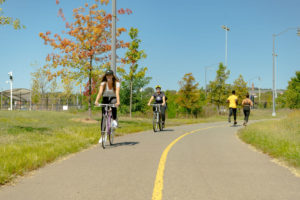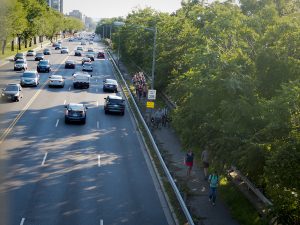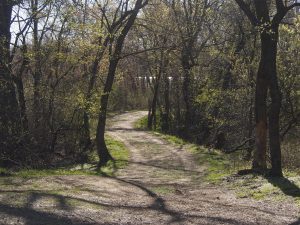There may be a specific image that comes to mind when you hear the word ‘trail,’ but are you aware that there are actually a number of different definitions associated with it?
There are a wide variety of trail types for various uses, but the trails in the CTC’s expansive network must follow specific criteria to be included. (You can find the CTC’s inclusion criteria here!) To name a few, all of the trails included in the CTC network are paved (with the exception of the Chesapeake and Ohio Canal Historic Park towpath trail), designed for non-motorized use, well-suited for both transportation and recreation, directly connected to the overall system (or will be connected at a future date), and have a 10-12 foot minimum width. We have allowed some exceptions to this width requirement for short segments of trail in areas where trails are constrained by design as well as for trails existing prior to 2017 when the width design minimum was only 8ft. Now, a 10 foot width is the minimum requirement for all new trails!
Why 10-12ft. wide? The CTC’s width criteria comes from the AASHTO (American Association of State Highway and Transportation Officials) Guide for the Development of Bicycle Facilities, 4th Addition. For example, the guide recommends a minimum path width of 11-14ft. in locations where more than 300 total users are expected during peak hour. This is because 11ft. wide pathways are needed to allow a cyclist to comfortably and safely pass another trail user going in the same direction while a third path user is approaching from the opposite direction.
Here are some examples:
Shared-use path/paved surface trail: an off-street travel-way that is designed for non-motorized travelers such as pedestrians, cyclists, inline/roller skaters, skateboarders, wheelchair users, etc. and therefore is accessible for all, while meeting American with Disabilities Act requirements

Hiker/biker trail: a trail that is often gravel with sections that may be grass, mud, or even concrete used for mountain biking, hiking, and/or trail running

Sidepath: a shared-use path with traffic flowing in both directions located alongside a roadway

Standard natural surface trail: the surface of the trial is predominantly earth, and the trail is designed and managed for ground-based travel


